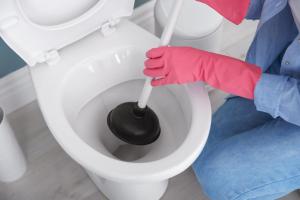Effective Solutions for a Slow Flushing Toilet: Troubleshooting & Fixing Tips

-
Quick Links:
- Understanding Slow Flushing Toilets
- Common Causes of Slow Flushing Toilets
- Diagnosing the Problem
- Step-by-Step Repair Guides
- Preventative Maintenance Tips
- Case Studies
- Expert Insights
- FAQs
Understanding Slow Flushing Toilets
A slow flushing toilet can be a significant inconvenience, often leading to frustration and potential plumbing problems. Understanding how your toilet works is the first step in identifying and resolving issues. Toilets rely on a combination of gravity and water pressure to clear waste effectively. When this process is compromised, you may experience a slow flush.
Common Causes of Slow Flushing Toilets
Several factors can contribute to a slow flushing toilet. Here are some of the most common:
- Clogged Drain Lines: Accumulation of debris can obstruct the drain path.
- Low Water Level: Insufficient water in the tank can hinder flushing power.
- Worn Flapper Valve: An ineffective flapper can lead to low water flow.
- Old Toilet Design: Older toilets may not have the flushing efficiency of newer models.
- Mineral Buildup: Hard water can lead to mineral deposits in the toilet’s components.
Diagnosing the Problem
Diagnosing a slow flushing toilet involves a few simple steps:
- Visual Inspection: Check for visible clogs in the bowl or drain.
- Check Water Level: Remove the tank lid and observe the water level.
- Inspect the Flapper: Ensure the flapper is sealing properly.
- Look for Mineral Deposits: Examine the rim holes for buildup.
Step-by-Step Repair Guides
1. Clearing Clogged Drain Lines
If a clog is suspected, follow these steps:
- Use a plunger to create suction and dislodge the clog.
- If plunging fails, use a toilet auger to reach deeper clogs.
- Flush the toilet to ensure normal operation.
2. Adjusting the Water Level
To correct a low water level in the tank:
- Locate the float arm and adjust its height if necessary.
- Flush the toilet to check if the water level rises appropriately.
3. Replacing the Flapper Valve
Here’s how to replace a flapper valve:
- Turn off the water supply to the toilet.
- Remove the old flapper from the flush valve.
- Attach a new flapper, ensuring it fits snugly.
- Turn the water supply back on and test the flush.
4. Cleaning Mineral Deposits
For mineral buildup:
- Use a wire coat hanger or a dedicated cleaning tool to clear rim holes.
- Consider using a descaling agent to remove stubborn deposits.
Preventative Maintenance Tips
To avoid future issues with slow flushing toilets, consider these maintenance tips:
- Regularly inspect and clean the toilet components.
- Flush the toilet periodically with vinegar to prevent mineral buildup.
- Check the water level in the tank every few months.
Case Studies
Understanding real-world applications can enhance your knowledge of toilet repairs. Here are a couple of case studies:
Case Study 1: Homeowner's Experience with Clogged Drain
In a suburban home, a family reported frequent toilet clogs. After inspection, they discovered a buildup of toilet paper and debris. They implemented a monthly cleaning routine, which significantly reduced clogs.
Case Study 2: Mineral Buildup in Hard Water Areas
A homeowner in an area with hard water experienced persistent slow flushing. After cleaning the rim holes and using a descaler, the flushing improved dramatically, demonstrating the importance of routine maintenance.
Expert Insights
Experts recommend regular maintenance for toilets, especially in areas with hard water. According to plumbing specialist John Doe, “Routine checks can save homeowners significant time and money.”
FAQs
- 1. What causes a toilet to flush slowly?
- Common causes include low water levels, clogged drains, worn flapper valves, and mineral buildup.
- 2. How can I tell if my toilet is clogged?
- Look for slow drainage, gurgling sounds, and incomplete flushes.
- 3. How often should I clean my toilet?
- Regular cleaning every month is recommended to prevent buildup and clogs.
- 4. Can I fix a slow flushing toilet myself?
- Yes, many issues can be resolved with basic tools and knowledge.
- 5. What is the average lifespan of a toilet?
- A standard toilet can last between 20-30 years with proper maintenance.
- 6. Should I replace my old toilet?
- If your toilet is over 20 years old and inefficient, consider replacing it for better performance.
- 7. How do I increase the water level in the toilet tank?
- Adjust the float arm or fill valve to increase the water level.
- 8. What type of cleaner is best for toilet maintenance?
- Vinegar and baking soda are excellent natural cleaners for routine maintenance.
- 9. How can I prevent mineral buildup in my toilet?
- Regular cleaning with vinegar and installing a water softener can help.
- 10. When should I call a plumber for a slow flushing toilet?
- If DIY solutions do not work or if you experience persistent issues, consult a plumber.
Random Reads
- How to draw lines in microsoft word
- How to draw on pictures videos whatsapp
- Mastering apple maps pins sharing locations
- Mastering attack bonuses dnd
- How to clean couch cushions
- How to clean copper
- Ultimate guide scrubbing acrylic bathtub
- Change microsoft office product key
- Change mac address windows
- Improve your microphone